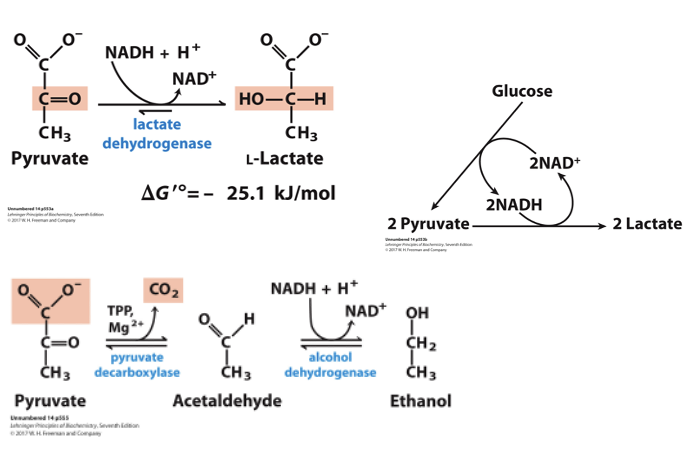GLYCOLYSIS
1/21
There's no tags or description
Looks like no tags are added yet.
Name | Mastery | Learn | Test | Matching | Spaced |
|---|
No study sessions yet.
22 Terms
Breakdown of metabolic fuels
Stage 1: metabolic fuels broken down into smaller units
Stage 2: acetyl-Co-A is oxidized releasing CO2 and electrons (and a little energy)
Stage 3: electrons are used to generate proton gradient for energy production
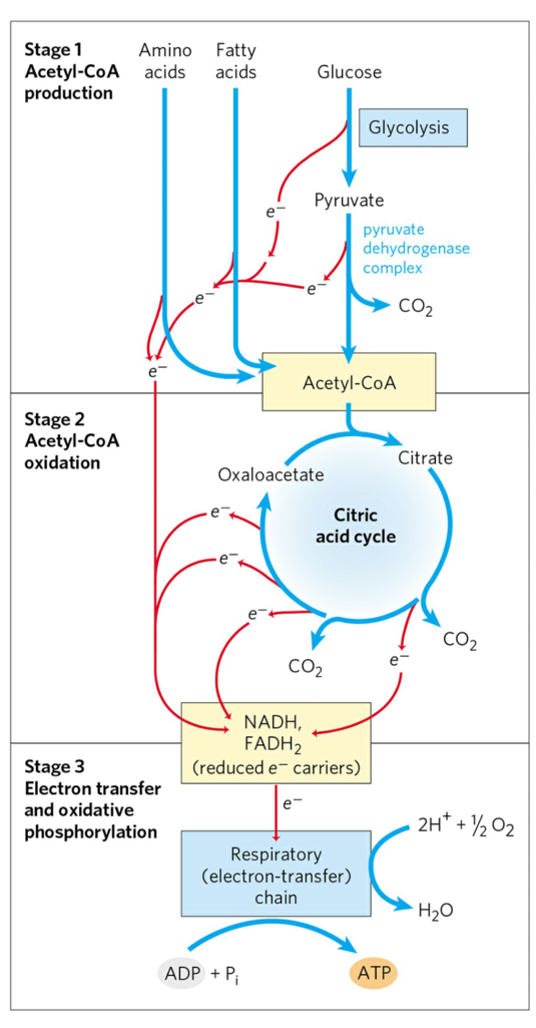
Glucose utilization
extracellular matrix and cell wall polysaccharides
synthesis of structural polymers (PPP)
oxidation via pentose phosphate pathway
ribose 5-phosphate
glycogen [starch, sucrose]
oxidation via glycolysis
pyruvate
Glycolysis Preparatory Phrase
The initial phase of glycolysis where glucose is phosphorylated and converted into a more reactive form, using ATP. This phase prepares glucose for subsequent cleavage into two three-carbon molecules.
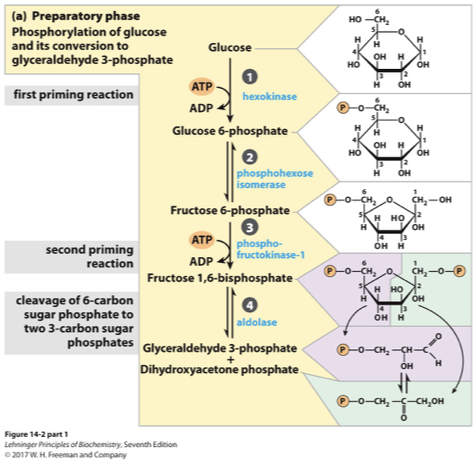
(1) Phosphorylation of glucose
to form glucose-6-phosphate.
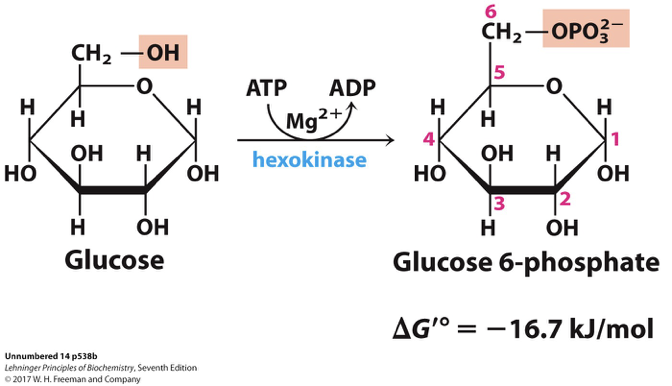
(2) Conversion of glucose 6-phosphate to fructose-6-phosphate
involves the enzyme phosphoglucose isomerase, which rearranges the molecular structure of glucose-6-phosphate into fructose-6-phosphate.
—> This is an essential step in glycolysis that facilitates further conversion into fructose-1,6-bisphosphate.
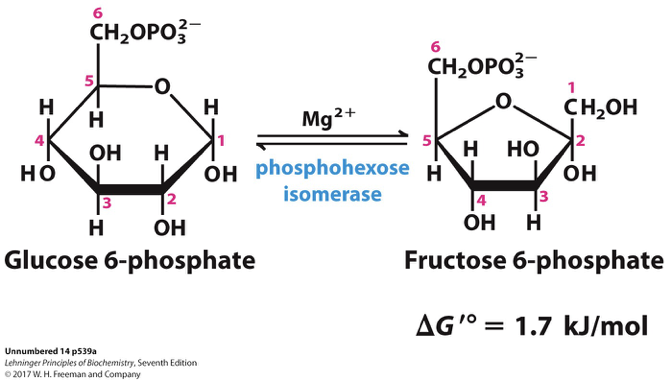
(3) Phosphorylation of fructose 6-phosphate to fructose 1,6-bisphosphate
is catalyzed by the enzyme phosphofructokinase, utilizing another molecule of ATP. This step is key in regulating glycolysis and preparing the substrate for the subsequent split into two three-carbon molecules.
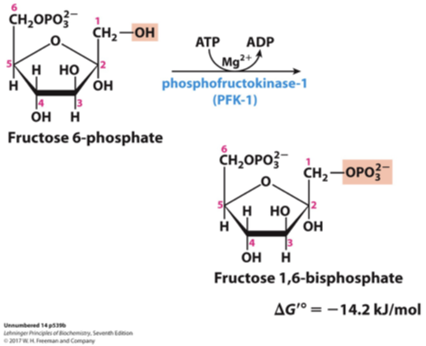
(4)Cleavage of fructose 1,6-bisphosphate
into two three-carbon molecules, glyceraldehyde-3-phosphate and dihydroxyacetone phosphate, by the enzyme aldolase. This step is crucial for continuing glycolysis.
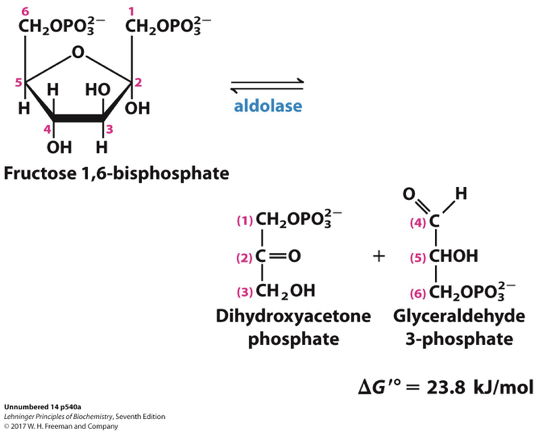
(5) Interconversion of the triose phosphates
refers to the conversion of dihydroxyacetone phosphate (DHAP) to glyceraldehyde-3-phosphate (G3P) and vice versa, catalyzed by the enzyme triose phosphate isomerase. This step ensures that both triose phosphates can proceed through the glycolytic pathway. is catalyzed by the enzyme aldolase, resulting in the formation of two three-carbon molecules: glyceraldehyde-3-phosphate and dihydroxyacetone phosphate. This reaction is crucial for the continuation of glycolysis.
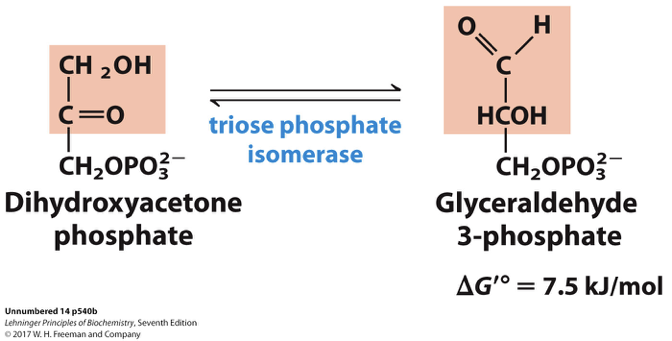
Fate of the carbon atoms of glucose
in glycolysis involves their conversion into pyruvate, with the production of ATP and NADH as energy carriers.
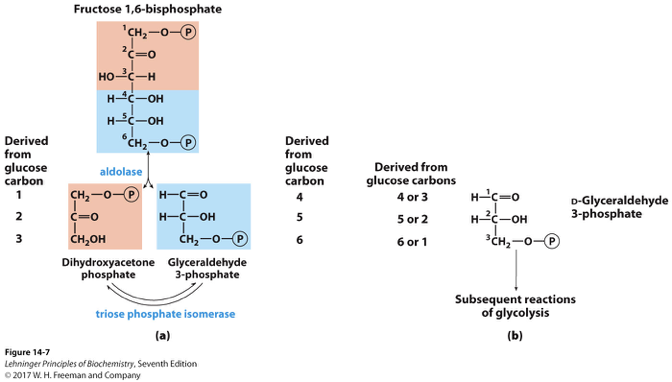
Glycolysis- Payoff phase
is the second stage of glycolysis where ATP is produced through substrate-level phosphorylation and NADH is generated, leading to the conversion of glyceraldehyde-3-phosphate to pyruvate.
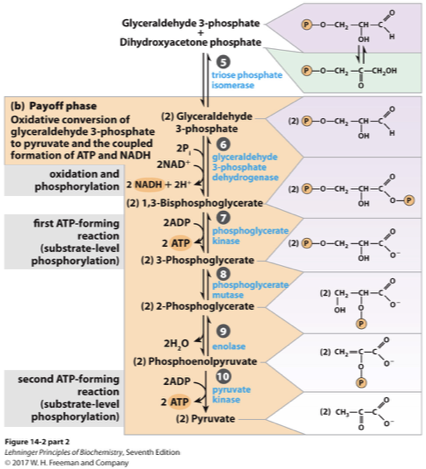
(6) Oxidation of glyceraldehyde 3-phosphate to 1,3-bisphosphoglycerate
is a key step in glycolysis that involves the oxidation and phosphorylation of glyceraldehyde-3-phosphate, catalyzed by the enzyme glyceraldehyde-3-phosphate dehydrogenase. This reaction converts glyceraldehyde-3-phosphate into 1,3-bisphosphoglycerate while reducing NAD+ to NADH.
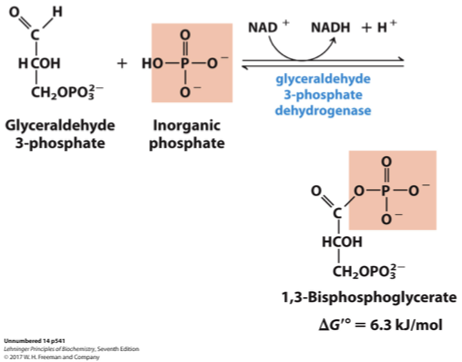
(7) Phosphoryl transfer from 1,3-bisphosphoglycerate to ADP
is a crucial step in glycolysis where a phosphate group is transferred from 1,3-bisphosphoglycerate to ADP, forming ATP and catalyzed by the enzyme phosphoglycerate kinase. This reaction is an example of substrate-level phosphorylation. This reaction illustrates the transfer of energy, enabling ATP production directly within the pathway.
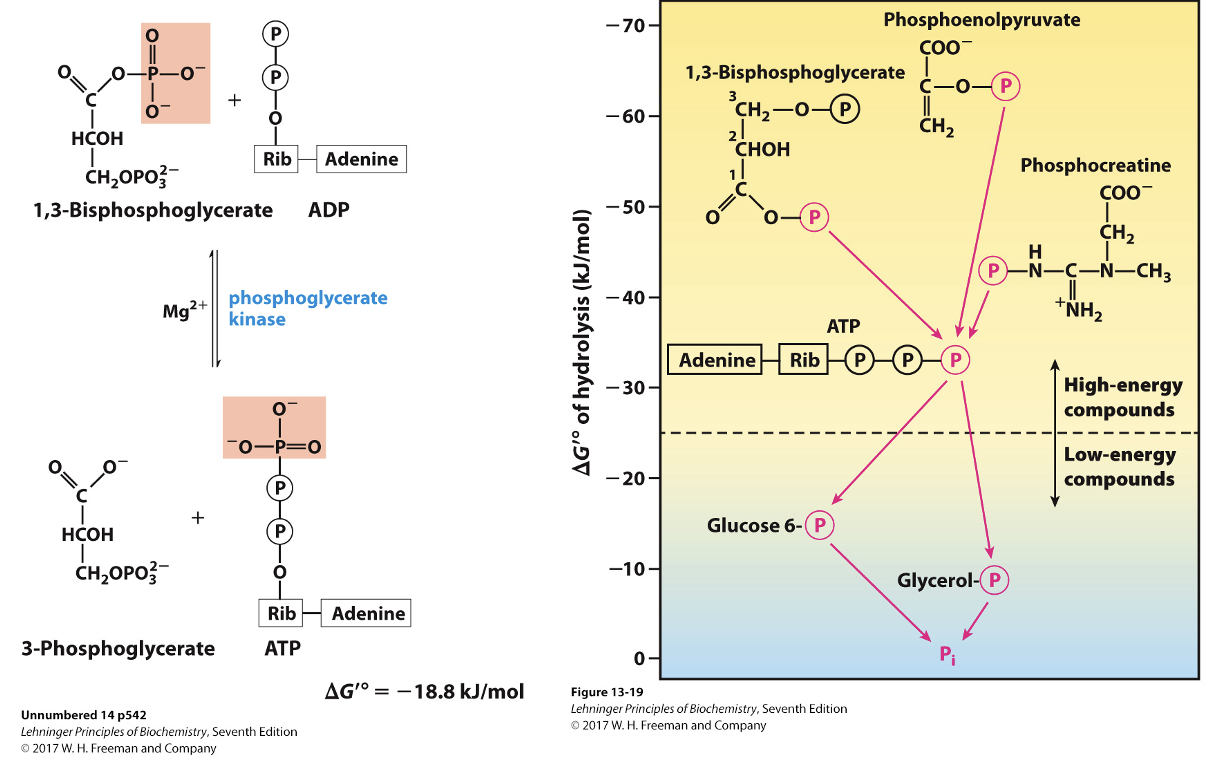
(8) Conversion of 3-phosphoglycerate to 2-phosphoglycerate
is a step in glycolysis where 3-phosphoglycerate is converted into 2-phosphoglycerate by the enzyme phosphoglycerate mutase. This reaction involves the rearrangement of the phosphate group, facilitating further steps in the glycolytic pathway.
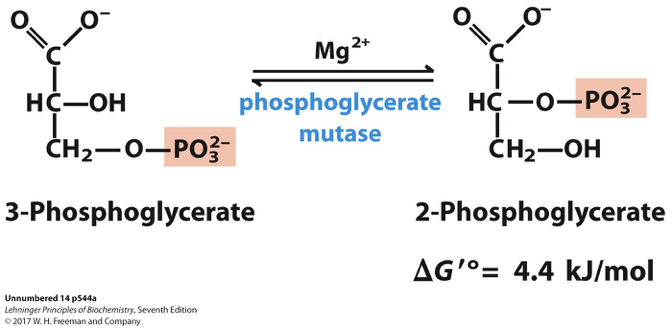
(9) Dehydration of 2-phosphoglycerate to
phosphoenolpyruvate
is a reaction in glycolysis that involves the removal of a water molecule from 2-phosphoglycerate, catalyzed by the enzyme enolase. This step is crucial for the formation of phosphoenolpyruvate, which has a high-energy phosphate bond.
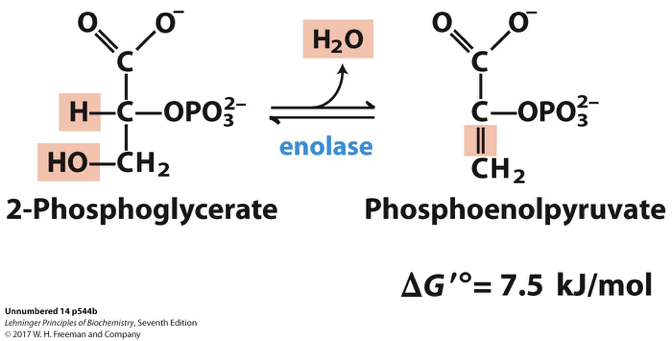
(10) Transfer of the phosphoryl group
from phosphoenolpyruvate to ADP
is the final step of glycolysis where the high-energy phosphate group from phosphoenolpyruvate is transferred to ADP, resulting in the formation of ATP. This reaction is catalyzed by the enzyme pyruvate kinase and is another example of substrate-level phosphorylation.
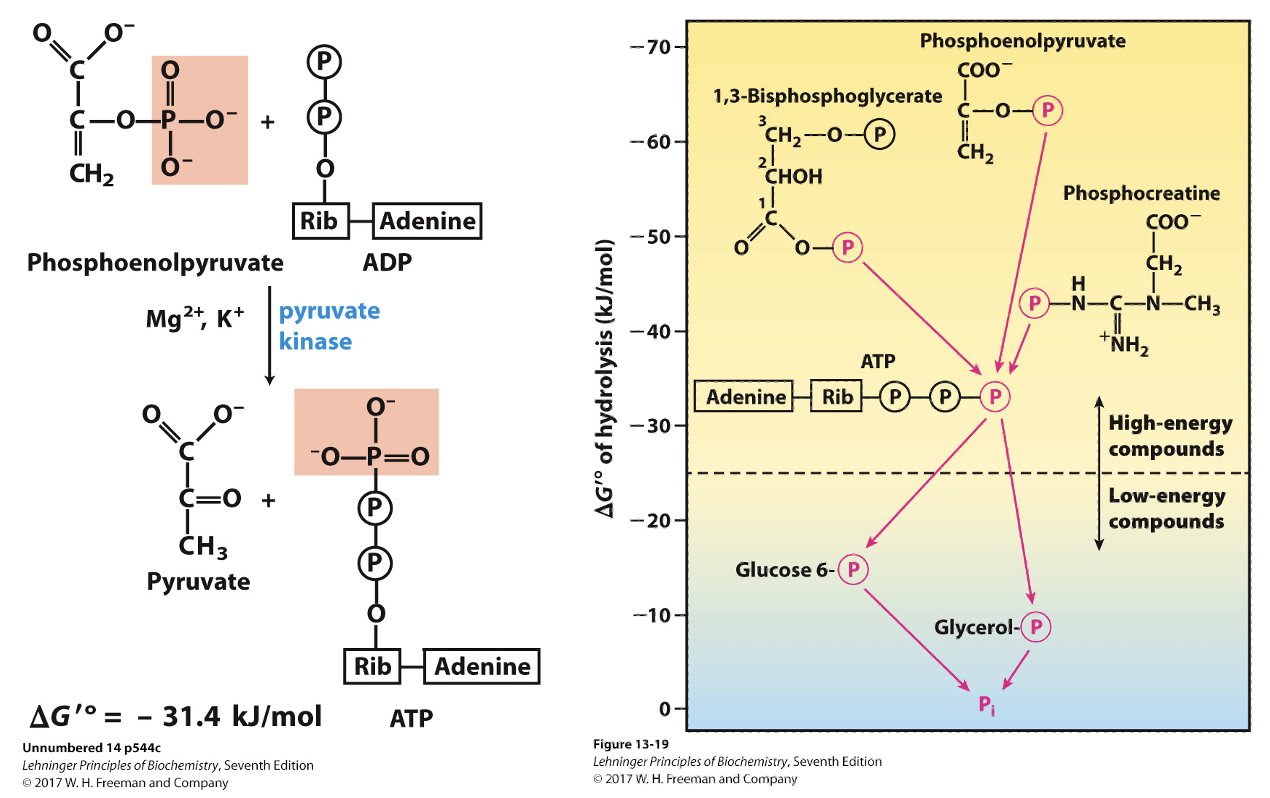
Glycolysis Summary
2 priming reactions - #’s 1 and 3
2 energy conserving reactions - #’s 6 and 9
1 NADH-generating reaction, # 6
2 ATP-generating reactions, #’s 7 and 10
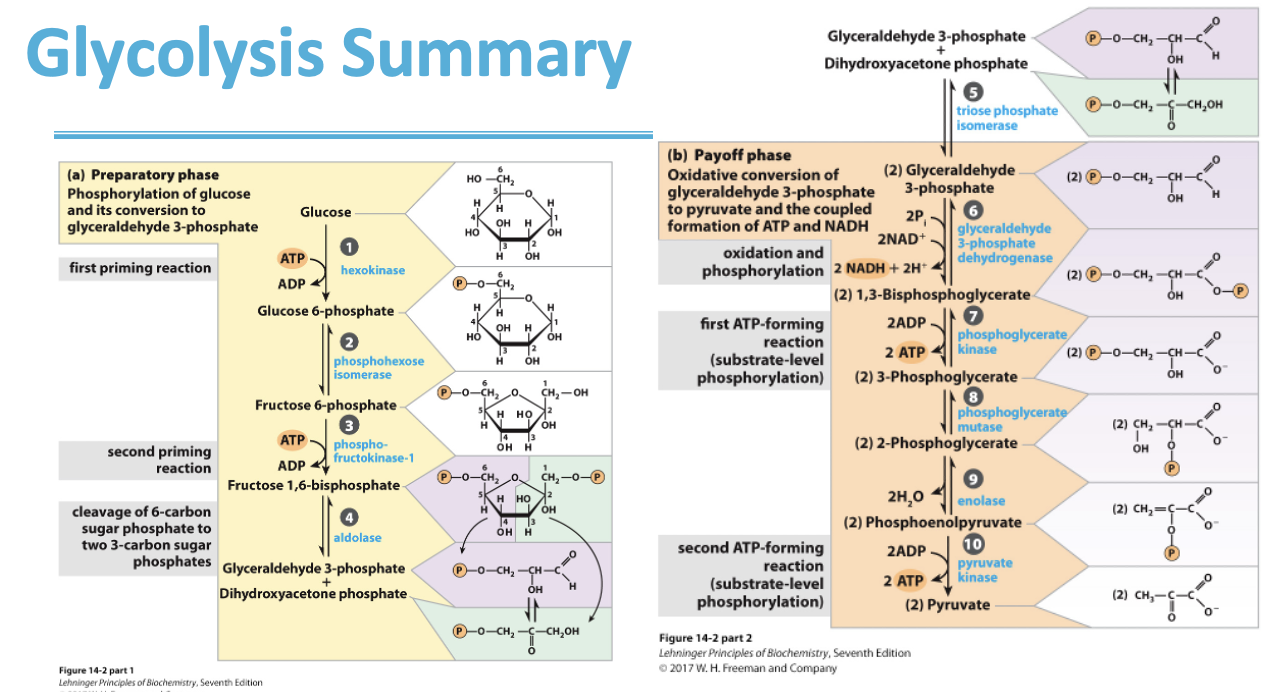
Glycolysis- Energy generation
is the process during glycolysis where glucose is broken down to produce ATP and NADH through substrate-level phosphorylation and oxidation-reduction reactions.

Feeder Pathways for Glycolysis
are metabolic routes that provide glucose or intermediates to enter glycolysis, including the breakdown of carbohydrates, amino acids, and fatty acids.
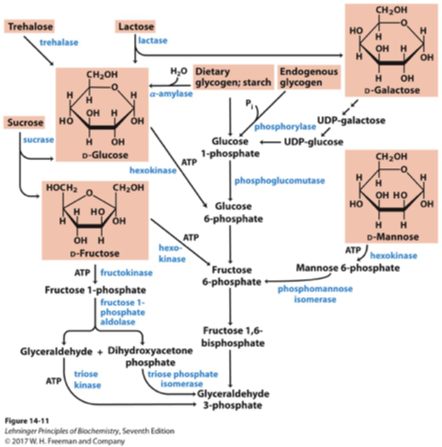
Galactose to Glucose-1-phosphate
is the biochemical process by which galactose is converted to glucose-1-phosphate, which can then enter glycolysis. This process involves multiple enzymatic steps, including the action of galactokinase and the enzyme UDP-glucose pyrophosphorylase, ultimately facilitating energy production.
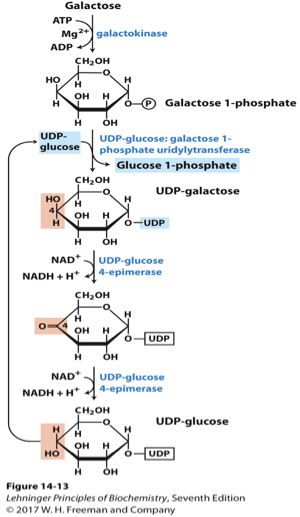
Fates of Pyruvates
are the various metabolic pathways that pyruvate can follow after glycolysis, including conversion to acetyl-CoA, lactate, or ethanol, depending on the organism and conditions. These fates determine the subsequent energy yield and the type of fermentation or respiration that occurs.
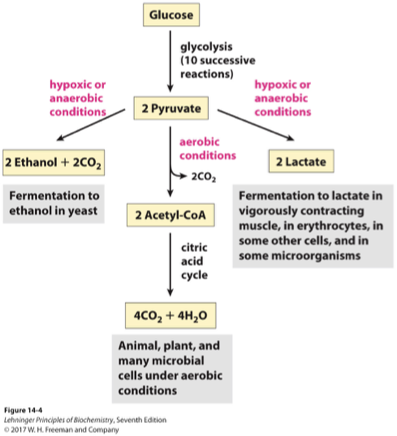
Anaerobic fates of pyruvate
include the conversion to lactate in animals and ethanol in yeast, allowing for energy production without oxygen.
